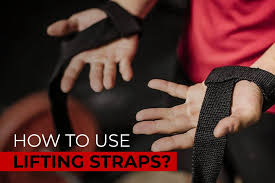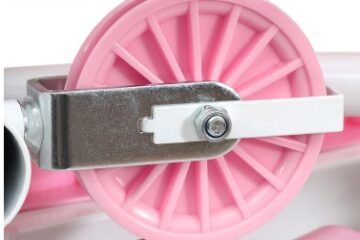Gym Straps and Wrist Wraps: How to Use Them Like a Pro
Every serious lifter knows that moment when your grip gives out before your muscles do. You’re in the middle of a heavy deadlift set, your back and legs feel strong, but your hands can’t hold on any longer. This frustrating scenario highlights exactly why gym accessories like straps and weightlifting wrist wraps have become essential tools for countless athletes. These seemingly simple pieces of equipment serve as game-changers in your training arsenal. They bridge the gap between your mental determination and physical limitations, allowing you to push your muscles to their true potential rather than being held back by grip strength or wrist stability.
Differences Between Gym Straps and Wrist Wraps
Gym straps and wrist wraps serve distinctly different purposes in your training routine, though both target the same general area of your body. Recognizing these differences helps you choose the right tool for specific exercises and goals. Gym straps primarily address grip strength limitations. These fabric or leather loops, often used alongside weightlifting wrist wraps, wrap around your wrists and the barbell, creating a mechanical connection that reduces the demand on your finger and forearm muscles. They excel during pulling movements like deadlifts, rows, and pull-ups where grip fatigue typically occurs before your target muscles reach failure.
Weightlifting wrist wraps focus on joint stability and support. These elastic bands wrap tightly around your wrists, providing compression and limiting excessive wrist extension or flexion. They shine during pressing movements like bench press, overhead press, and squats where your wrists bear significant load and need additional structural support.
The material construction reflects their different roles. Straps use sturdy fabric or leather designed to handle heavy loads without stretching or tearing. Wrist wraps utilize elastic materials that provide controlled compression while allowing necessary movement range.
Timing of use also differs between these accessories. Straps typically come into play during your heaviest sets when grip becomes the limiting factor. Wrist wraps can be worn throughout entire workouts, providing consistent joint support across multiple exercises.
Professional powerlifters and bodybuilders often use both accessories within the same training session, switching between them based on the specific exercise and their individual needs.
Choosing the Right Straps and Wraps for Your Workout
Selecting quality equipment makes a substantial difference in both performance and durability. Your choice should reflect your training style, experience level, and specific lifting goals.
For gym straps, material quality stands as the most crucial factor. Cotton straps offer comfort and breathability but may stretch over time under heavy loads. Leather straps provide superior durability and grip but require a break-in period. Nylon straps strike a balance between comfort and longevity while maintaining their shape through extensive use.
Length considerations matter more than many lifters realize. Shorter straps work well for most people and provide adequate wrapping capability without excess material getting in the way. Longer straps accommodate lifters with larger hands or those who prefer multiple wraps around the bar.
When selecting weightlifting wrist wraps, stiffness level becomes the primary consideration. Softer wraps offer comfort and flexibility, making them ideal for beginners or those performing high-repetition work. Medium-stiffness wraps provide balanced support suitable for most training scenarios. Competition-level stiff wraps deliver maximum support but require experience to use effectively.
Width affects both support and comfort levels. Narrower wraps allow greater wrist mobility but provide less overall support. Wider wraps maximize joint stability but may feel restrictive during certain movements.
Quality indicators include reinforced stitching, durable thumb loops, and materials that maintain their elasticity over time. Investing in premium accessories pays dividends through years of reliable performance.
Proper Technique for Using Gym Straps
Mastering strap technique transforms your pulling exercises and unlocks new strength potential. The process requires attention to detail and consistent practice to develop muscle memory. Begin by threading the strap through itself to create a secure loop around your wrist. The strap should sit snugly against your wrist without cutting off circulation. Position the loose end so it will wrap around the bar in the direction opposite to your grip.
Approach the barbell and establish your normal grip position. Place the loose end of the strap against the bar, then roll the bar away from you to begin wrapping the strap around it. This rolling motion creates multiple layers of strap material between your hand and the bar. The wrapping direction is crucial for security. Always wrap in the direction that tightens the strap as you lift. For an overhand grip, this means wrapping the strap under and around the bar. The tension created during the lift naturally tightens the connection.
Once wrapped, grip the bar firmly while ensuring the strap sits between your palm and the bar. Your fingers should wrap around both the bar and the strap material. This combination of mechanical advantage and natural grip creates an incredibly secure connection.
Practice the setup process with light weights until the movement becomes automatic. Fumbling with straps between heavy sets wastes energy and breaks your mental focus. Smooth, efficient setup becomes especially important during high-intensity training sessions. Research indicates that using lifting straps can enhance performance in exercises like deadlifts by allowing for greater load handling and improved movement velocity.
How to Wrap Your Wrists Correctly
Proper wrist wrapping technique is crucial for providing optimal support and preventing injuries during weightlifting. The goal is to achieve adequate compression without compromising blood circulation or joint mobility.
- Positioning: Begin with your hand in a neutral position, neither flexed nor extended. Place the thumb loop over your thumb and start wrapping just above the wrist joint. The initial wrap should cover the base of your hand where it meets your wrist.
- Tension: Maintain consistent tension throughout the wrapping process. Wraps that are too loose provide insufficient support, while those that are too tight can restrict blood flow and cause discomfort. Aim for firm compression that allows you to make a fist comfortably.
- Overlap: Overlap each wrap by approximately half the width of the wrap material. This overlapping pattern distributes pressure evenly across your wrist and prevents gaps that could allow excessive joint movement.
- Securing: The final wrap should secure with the Velcro closure positioned where it won’t interfere with your grip or get caught on equipment. Most lifters prefer the closure on the outside of their wrist rather than the palm side.
- Exercise-Specific Adjustments: Different exercises may require slight adjustments to your wrapping technique. Pressing movements benefit from wraps that extend slightly onto the hand for maximum support, while pulling exercises might work better with wraps focused primarily on the wrist joint itself.
- Monitoring: Check the tightness periodically during your workout. Wrist wraps may loosen slightly as your hands warm up and swell from increased blood flow. Quick adjustments between sets maintain optimal support levels.
Summary
Gym straps and weightlifting wrist wraps represent powerful tools that can elevate your training when used intelligently. These accessories bridge the gap between your ambitions and your current physical limitations, allowing you to train your target muscles more effectively. The key to success lies in understanding that these tools enhance rather than replace good training fundamentals. They work best when combined with proper technique, progressive programming, and respect for your body’s signals. Smart lifters view them as performance enhancers rather than crutches.



